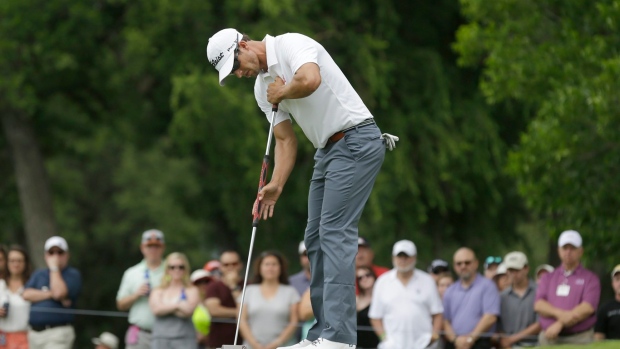Nov 9, 2015
The end of anchoring putters
While there are a dozen or so players of note who locked their long putters on the PGA Tour, nowhere will the new rule be felt more than on the 50-and-over circuit
By Bob Weeks

The Champions Tour concluded its season on Sunday, and with it came the end of anchoring putters for many in the field. While there are a dozen or so players of note who locked their long putters on the PGA Tour, nowhere will the new rule be felt more than on the 50-and-over circuit.
From bad backs to yippy strokes, the older generation has utilized the long wand as a means of staying competitive. For many, it's the only way they've been able to keep their games afloat. By some estimates the usage at some events is as high as 40 per cent of the field.
But that will change with the Champions Tour gathers for the start of next season. The rule prohibiting anchoring comes into effect Jan. 1, 2016, sending a lot of players scrambling to find a new allowable method.
Perhaps no one has benefitted more from an anchored putter than Bernhard Langer, the German golfer who won the Charles Schwab Cup on Sunday, the third time he's earned the season-long title.
He's struggled throughout his career with putting yips and has adopted a wide variety of styles to combat his shortcomings - some stranger than others. At one point in his career, he was holding the putter in such an unusual position that one sportswriter said it looked as if he was trying to putt and wind his watch at the same time.
"I've thought about it a little bit," he said after losing in a playoff to Billy Andrade at the final event on the Champions Tour schedule. "I've gathered a few putters, different styles, different lengths, different grips.
"My first thought is I'll probably go back to what I did before I went to the long putter, which was what [Matt] Kuchar does, holding the putter against the left forearm that way, and Soren Kjeldsen in Europe does the same thing. I putted that way for seven years and I won a number of tournaments including the Masters, and if you can putt on the Masters' greens and win with a grip like that, I would think I could do it in other tournaments, but we'll see."
Some golfers have already tried to make the transition. On the regular tour, Adam Scott, Keegan Bradley and Brendan Steele are among the early converts, while David Hearn, Tim Clarke and Carl Pettersson will play until the deadline.
Champions Tour player Michael Allen said that one of the most difficult parts of converting is not having an option any more. By his estimation, he played between six and eight events this year using the shorter blade, but when it wasn't behaving, he transitioned to the long model.
"The hardest thing is really going to be I can putt quite well [with the conventional length] but when I stop putting well, I can always go back to the long putter," he stated. "So that will be the hard thing, when I start kind of questioning it and all that, where do I go from there? I've got a lot of little putters. I'll see what I do."
For some players, however, the rule change is welcome. Canada's Stephen Ames, who finished tied for sixth on Sunday, marking his seventh top 10 of the year, said the change will level the playing field.
"Yeah, I do," he said when asked whether anchoring provides an advantage. "Yeah, without a doubt I think it does. Tiger put it the right way, he said that everything else swings, why is it the putter has to be anchored? It should be swinging. Completely agree about that."
The off-season for Champions Tour players begins today, and for many it will mark the hunt to find a putting style that will work. Clearly for some, it will be career-changing and quite possibly for a few, it might be career-ending.
